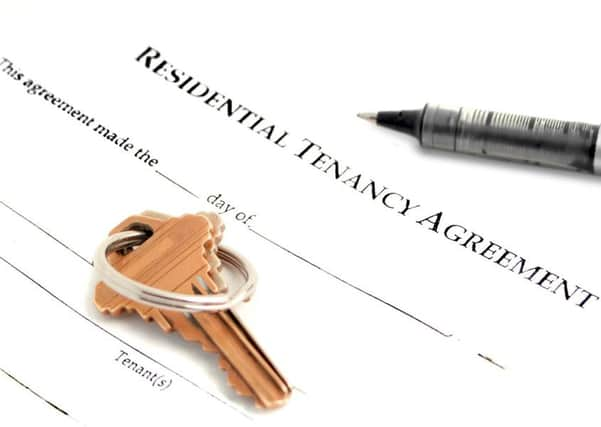Lesson on lettings relief for landlords


Last October’s Budget proposed changes to come into effect from 2020 that will reduce the amount of Capital Gains Tax reliefs that apply when selling a property that has been used as a main residence.
Here I look at the proposed changes that affect a property that has been used as a main residence also being let out.
Advertisement
Hide AdAdvertisement
Hide AdAny changes to reduce tax relief for letting out a former home will further discourage home owners from retaining their property as they move up the housing ladder, so this could be seen as another attempt to open up the UK housing market through taxation.
Don’t forget that landlords have endured a number of tax changes in recent years that have negatively impacted their business, including the introduction of a three per cent Stamp Duty surcharge, restrictions on mortgage interest tax relief and removal of tax allowances for furnished properties etc.
So where does Principal Private Residence and Lettings relief come in?
Principal Private Residence relief ensures that capital gains made on the sale of a person’s only or main home are not subject to capital gains tax.
Advertisement
Hide AdAdvertisement
Hide AdThe relief covers not only the periods the property was occupied but also provides relief for other periods of non-occupation. If a property has only been occupied as a main residence for part of the ownership period, PPR relief will apply to only part of the gain, leaving an element subject to CGT.
A beneficial extension to PPR relief is ‘lettings relief’, which can further reduce a capital gain where a PPR qualifying property has also been let out. Lettings relief is subject to restrictions, being the lower of: The portion of gain qualifying for PPR relief; the portion of gain relating to the period of letting, a cap of £40,000 per person – so £80,000 for those with spouses/civil partners.
Under current rules a couple could benefit from up to £80,000 of lettings relief, which would save CGT of £22,400 at the current 28 per cent CGT rate for residential property.
For some, lettings relief has always been considered fairly generous as there is no equivalent relief for pure buy-to-let properties. The original intention for the relief was to encourage homeowners to make use of the property through letting if they were struggling to sell it, rather than leave it empty.
Advertisement
Hide AdAdvertisement
Hide AdHowever, the Budget proposed that from April 2020 lettings relief will only apply if the owner shares the property with their tenant i.e. shared occupation.
The Chancellor’s statement around shared occupancy has confused many since the Budget, as any homeowner who lets their property whilst in occupation themselves will not see any restriction to their PPR relief under current rules and rent-a-room relief will come into play.
On the face of it, the need for shared occupancy would render lettings relief effectively redundant. As such, we must wait for further details to have more clarity on the specific proposals.
The PPR rules can be complex and the Budget proposals will mean that anybody looking to sell a property that has at some point been their main residence will need to review how the CGT and PPR rules will apply in their case.
Advertisement
Hide AdAdvertisement
Hide AdFor some, it might be worth selling their rental property before April 2020 to ensure they receive as much relief as possible, particularly for married couples or civil partners who currently qualify for more relief than they will post-2020.